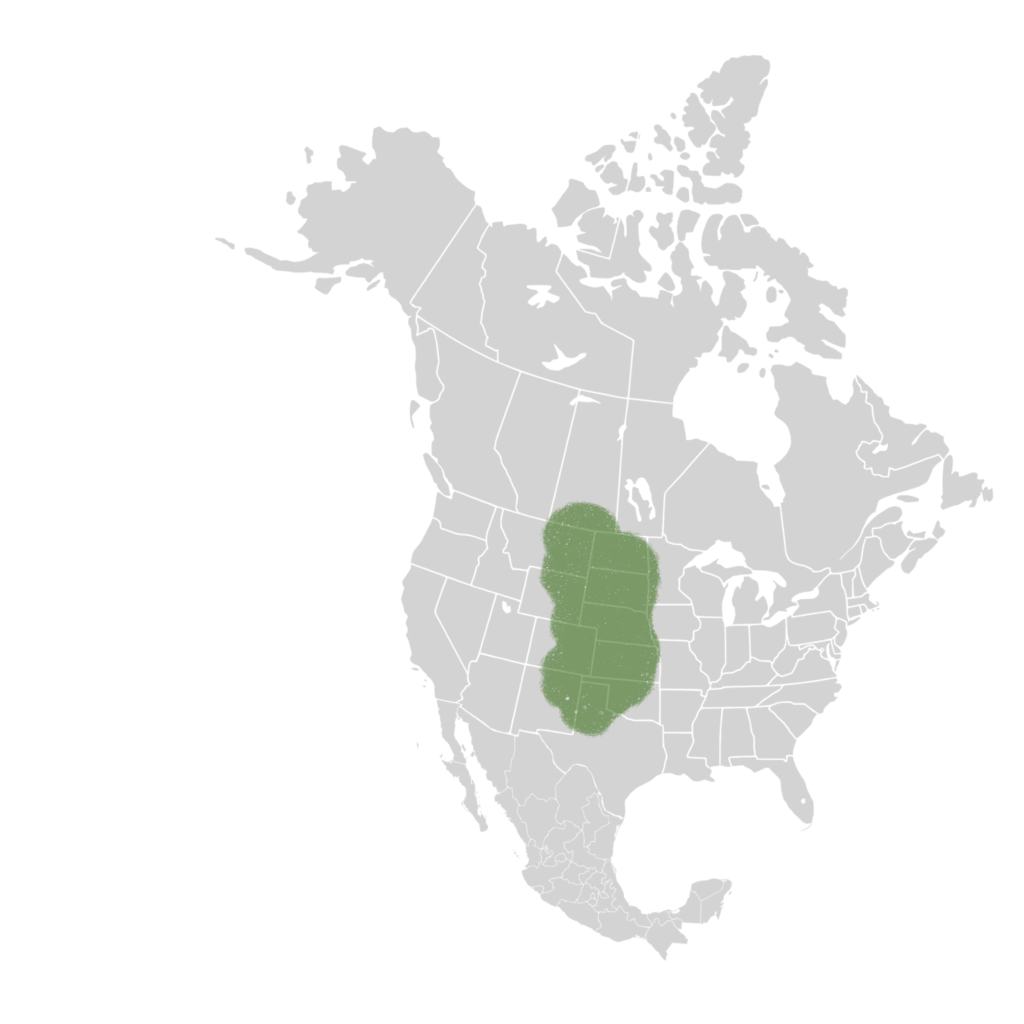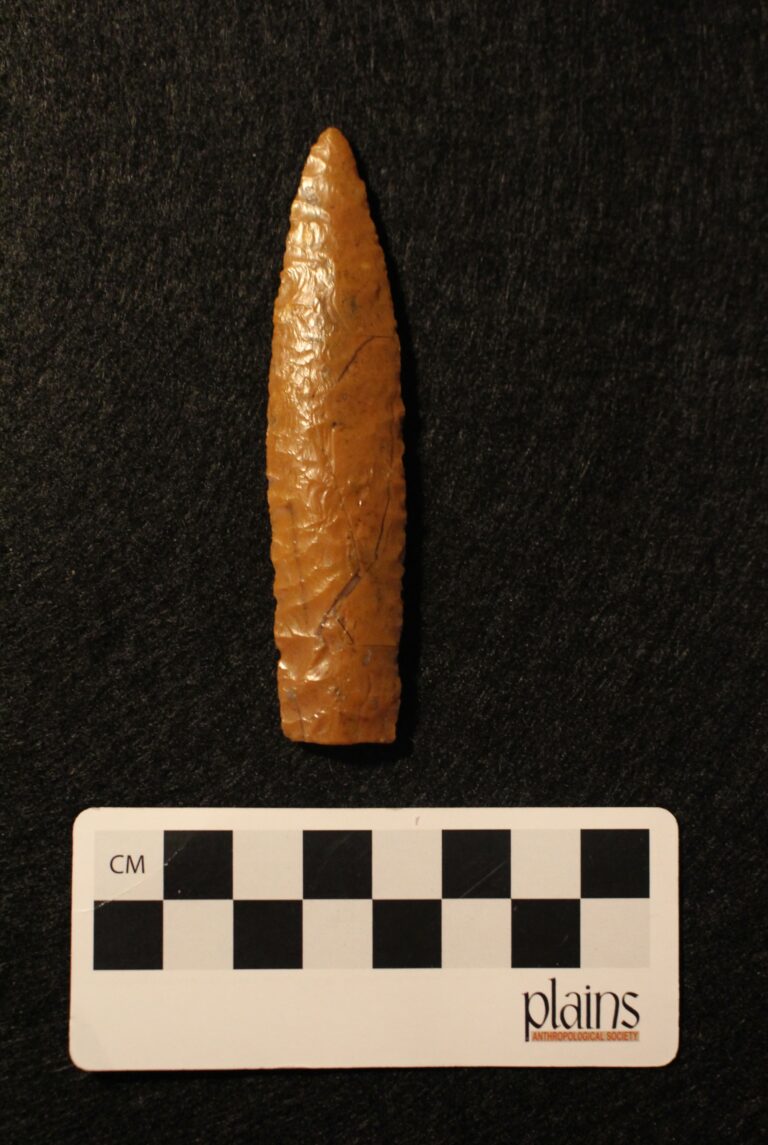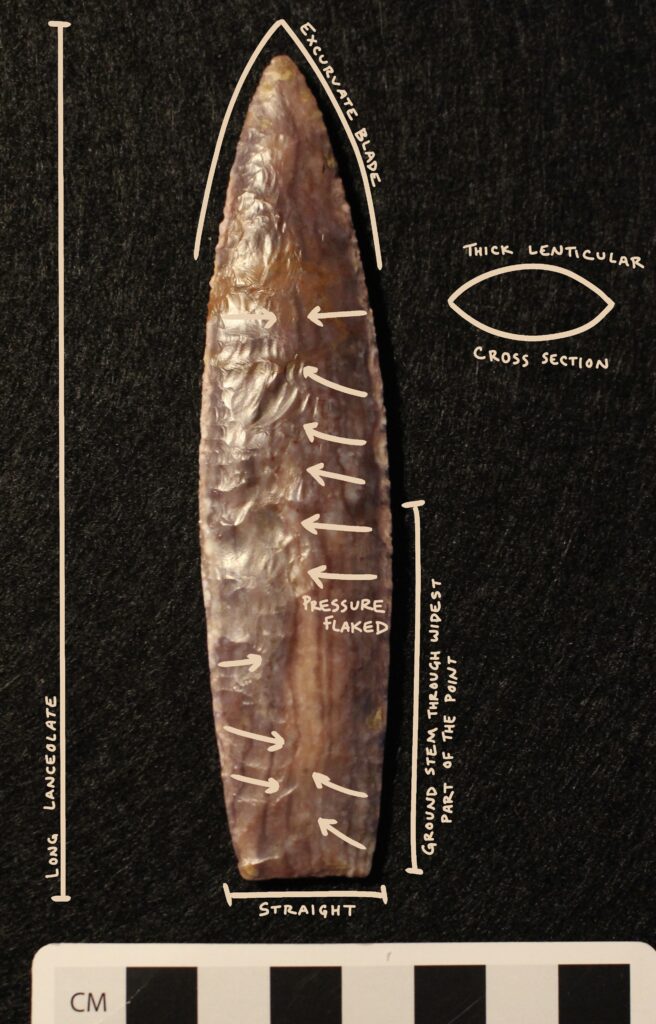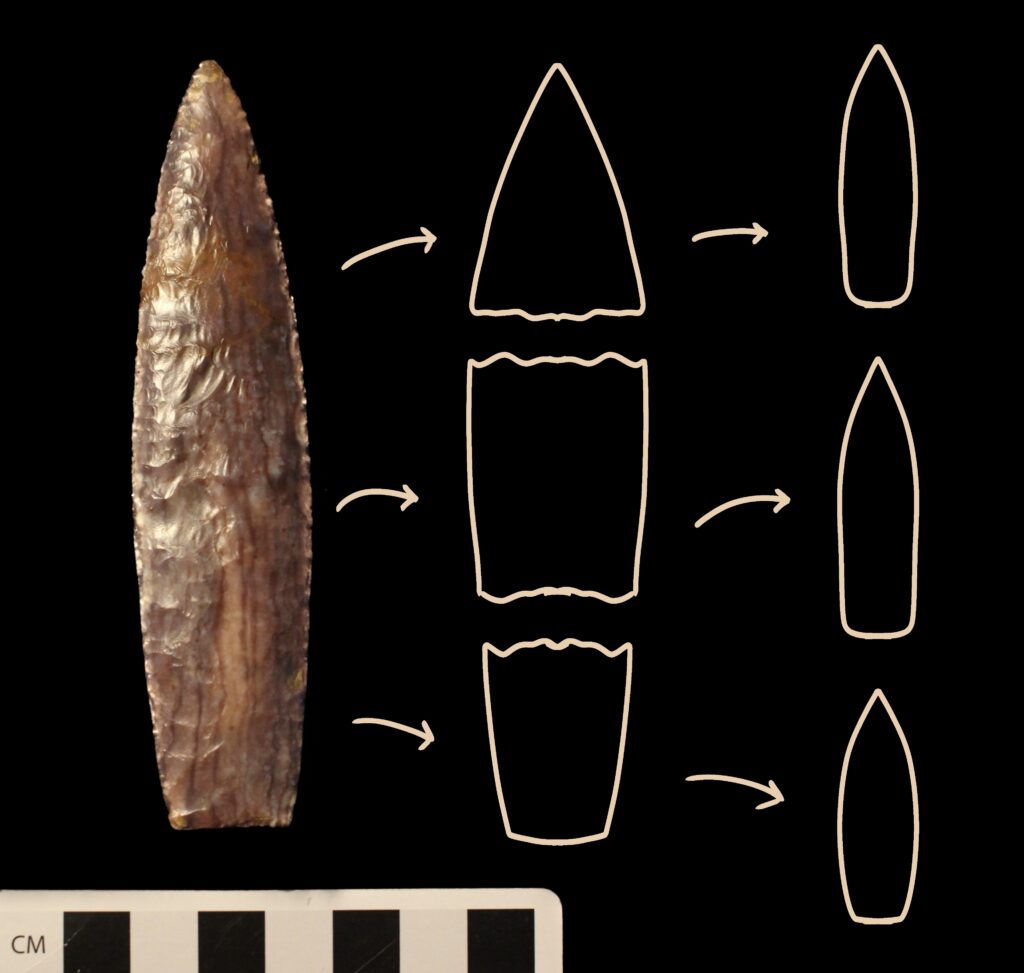Agate Basin
10,400 - 9,000 BC ; [Paleo]
While Agate Basin and Folsom’s final products don’t stylistically look similar, some theorize that early production stages (preforms) show similar flaking techniques between the complexes – this would imply that Agate Basin evolved from Folsom. Based on radiocarbon dates, the two traditions did overlap chronologically, but more evidence is needed before anything can be said with certainty. ¹ ²
The Agate Basin complex shows an increase in communal hunts of bison throughout the plains. Still, there is some discussion about the social organization, and food procurement strategies of these people. Two different suggestions are: that communal hunting was the main form of subsistence. The other camp believes that the small family structures had a broad spectrum of subsistence, and they supplemented their diets with communal hunts when they could organize larger groups together. A mixture of both theories was likely the reality.5
Agate Basin Points
Agate Basin are long lanceolate points which lack flutes. They are created from a large bifaces by reducing their size using percussion flaking, then shaping the sides using pressure flaking. This shape is postulated to have been good for reworking – especially in the case of breakage. The majority of found points are reworked, and there are examples of bases, tips, and midsections being remade into new points.³
Typology
- Form
- Base
- Horizontal Cross Section
- Vertical Cross Section
- Reduction
- Reduction Direction
- Stem Grinding
- Basal Grinding
- Lanceolate
- Excurvate
- Thick lenticular
- Uniform
- Pressure
- Horizontal
- Yes, where it is widest
- Rarely
Notable Sites
- Agate Basin Site, Wyoming – 53 Bison killed, most likely in a series of hunts. Cuts of meat are thought to have been frozen here, for consumption when needed.4
- Allen Site, Nebraska – A variety of animals were procured at this campsite. Bison, pronghorn, deer, rabbits, prairie dog, and freshwater mussels are all examples. Unlike the other sites mentioned, the Allen Site does not have evidence of communal hunting.5
- Frazier Site, Colorado – 44 Bison killed here. Lithics found at the site are materials from the Texas panhandle and East central Wyoming. Interestingly, these non-local materials are predominant at this site over the high quality chalcedony found nearby.4
Distribution Map (Great plains)

References cited
Typology:
Taylor, J. (2006). Projectile points of the high plains: New perspectives on typology based on examinations of original type site specimens (1st ed). Jeb Taylor Artifacts.
¹Carlisle, R. C. (Ed.). (1988). Americans before Columbus: Ice-Age origins: selected papers from the First Columbian Quincentenary Symposium, Smithsonian Institution, September 26, 1987. Dept. of Anthropology, University of Pittsburgh.
²Wood, W. Raymond, ed. Archaeology on the Great Plains. Lawrence: Univ. Press of Kansas, 1998.
³Kornfeld, Marcel, George C. Frison, Mary Lou Larson, Bruce A. Bradley, and George C. Frison. Prehistoric Hunter-Gatherers of the High Plains and Rockies. 3rd ed. Walnut Creek, Calif: Left Coast Press, 2010.
4Mitchell, Mark. “Agate Basin Archaeology at Beacon Island, North Dakota.” Paleocultural Research Group, July 2012. https://paleocultural.org/wp-content/uploads/2019/01/PCRG-RC86-Beacon-Island-Web-Version.pdf.
5Benders, Quinn. “Agate Basin Archaeology in Alberta and Saskatchewan, Canada,” 2010. https://doi.org/10.7939/R3KP5X.



